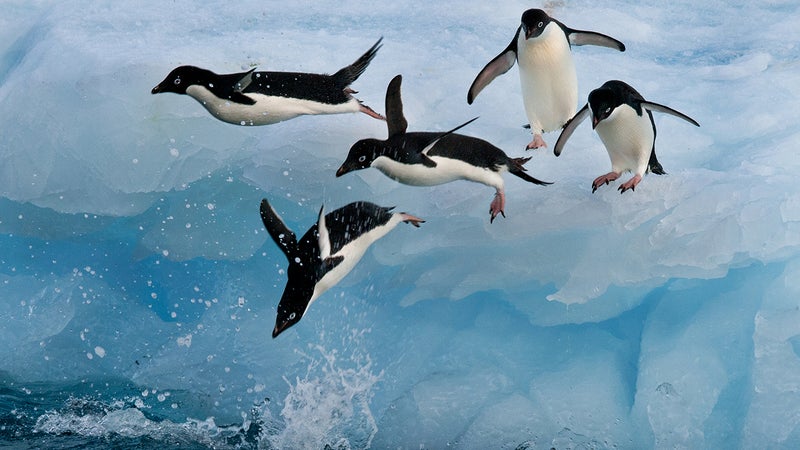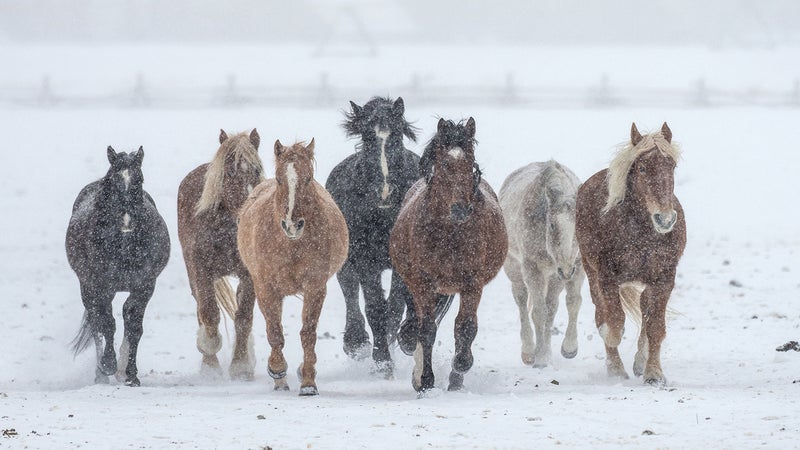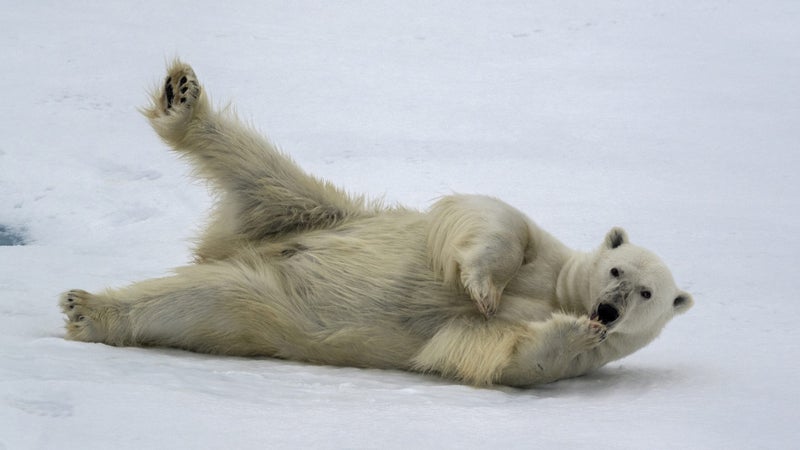How to Photograph Wildlife in the Winter
All the gear and techniques you’ll need to nail the perfect snowy moment
In addition to being the most fun and serene time to play outside, winter can also be the best time to capture animals in their natural habitat. There are often fewer people out tromping around, and snow and soft winter light can create truly magical pictures. Of course, with colder temperatures, there's less room for error—both in terms of planning safe outings and making sure all of your gear is dialed. To make sure you have what you need when you head out, we asked Pulitzer Prize–winning wildlife photographer and Olympus Visionary for his top snowy-season tips. Here’s what he said.
Protect Your Batteries
Like most batteries, camera batteries lose energy in the cold, so Dickman has an entire system to ensure they keep working. First, he starts with rechargeable batteries that are rated for colder temps, like the , which fits his camera and works in temps as low as around 14 degrees. Next, he always makes sure his gear is completely juiced. “Fully charged batteries are key, especially in cold weather,” he says. As backup, he always brings two to four extra batteries. And finally, he keeps those spare batteries warm by storing them in an internal pocket next to his body and, on really cold days, wrapping them with hand warmers.

Check the Weather
There’s a difference between weather that can add texture and pop to an image and weather that can kill you, or, at the very least, make you pretty miserable and ruin your chances for a good photo. To know what to expect, Dickman uses a variety of apps and websites. He likes because it provides detailed weather by elevation, and the because you can request a spot forecast at your exact location. His two go-to apps are , which gives you an hour’s notice of any incoming precipitation, and , which shows the sun’s path, magic hours, rise and set times, and more. All that data allows Dickman to more accurately predict optimal light conditions and figure out exactly what time the sun will disappear behind a feature.
Shoot in RAW
White, snowy landscapes help fill in annoying shadows and can create a certain pop in your photos. But they can also be hard to expose for, because they’re so bright. Dickman works hard to nail the right exposure by paying attention to tools like his camera’s histogram, but he also shoots large 20.4-megapixel uncompressed RAW files on his OM-D E-M1 Mark II so that, if need be, he can make highly detailed exposure adjustments in post-production.

Use the Conditions to Your Advantage
Dickman likes to include the snow as an extra element in all of his winter photos. “Winter opens up that extra dimension. It adds background, a feeling, texture, and is just one more tool for you as a photographer,” he says. “A slow shutter offers a blur of snow, while a high shutter can freeze snow in place.” He also likes to take advantage of the angular sun during the winter, which is why he's so fond of shooting in the Arctic or Antarctica, where the golden light can last nearly the entire day. For those who can’t travel, he suggests wide-open spaces that can capture the texture of the snow and allow for angular light to shine through unobstructed.
Be Careful When You Walk Inside
If you bring a cold camera inside, it will immediately be covered in condensation and the lens will fog up. When you realize your error, you may rush back outside, only to have the condensation freeze. To prevent that problem, Dickman often leaves his cameras outside while he warms up but brings his batteries with him to keep them from losing their charge. When condensation or frost does build up on his gear—sometimes it can’t be avoided—Dickman isn’t worried, because he relies on a camera like the and glass like the �����Ի���, all of which are fully weather-sealed.

Dress Properly
It's easy to get chilly sitting around outside and waiting for the light or an animal to materialize. To make sure he’s prepared, Dickman has a layering system. For his hands, he wears liner gloves thin enough to control the camera under well-insulated mittens. When it's time to shoot, he can quickly pop off the mittens with minimal fumbling. A warm down jacket with plenty of pockets (both external and internal) and a pair of insulated boots are also key. If Dickman knows he'll be waiting around in one spot for an especially long time, he'll bring a small piece of a foam sleeping pad to stand on as an additional layer of insulation between him and the cold ground. Finally, to protect his face, Dickman often wears a neck and face gaiter and wraps his tripod with a neoprene sleeve so that the freezing metal never touches his skin.
Go Out at Night
It might be tempting to stay inside by the fire when it gets dark, but winter's unique atmospheric conditions can make for ideal night-sky photography. “A low-pressure system can clean a lot of the humidity and dust in the air out,” Dickman says. “It can sweep out all the scuzz and you can have really wonderful conditions.” Even if you don't get a great shot, the stillness, crisp air, and sound of snow crunching beneath your feet will be well worth it.”
Whether you’re a professional photographer or an admirer of photography, Olympus has a camera system that’s designed for you. The stunning compact designs, sophisticated technologies, and powerful imaging help you get your shot in ways unlike any other camera manufacturer. Learn more at

